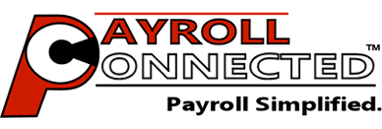
17 May Why Do I Need Schedules?
If you know what you worked and you know what the employees worked, then why the heck bother with keeping a schedule? Because the details matter. When all the work is done and years have passed, how can you be sure that the time paid is really the time earned? What if an employee complains to labour standards? What if the RCMP give you a call (Yes, it sounds extreme, but I’ve experience this)?
Okay, now that I’ve hyped up schedules to an impossible degree, let’s go over the details. First, why would this be a topic that I would want to even write about? Well, mainly because Payroll Connected is different than all other payroll software because we “force” the users to enter in schedules. Why would we put you through such horrible torture? Because we’re the only payroll software that calculates payroll completely automatically. In order to do this, the software needs the schedules. Overtime, Statutory Holiday Pay and even Vacation Pay are all dependent on knowing not only how much an employee earned, but also on what days they earned it.
Using Shifts for Calculations
Afore mentioned, three important aspects of payroll rely on shifts.
To calculate Overtime, the software adds up all the hours worked in a week (and day, depending on province) to determine if they worked more than just regular time. Ontario? Over 44 hours a week is overtime. Saskatchewan? Over 8 hours a day is overtime. BC? Time over 12 hours is DOUBLE Overtime! (spare a kind thought for BC businesses).
Statutory Holiday Pay is even more shift reliant. With provincial variations, Stat Pay is based on an averaging of wages over the previous month. How is that affected by shifts? Because once you’ve added up all the wages, divide the total by the number of shifts to find not only the Average Day’s Pay, but also the Average Hours Worked (for EI purposes!). And if you’re in Alberta, check this out: If a Stat Day falls on a Monday, count back the last 9 Mondays. An employee has to work 5 of those Mondays to qualify for Stat Pay at all! Critical.
Even for Vacation Pay?
Sure! Especially if the employee accrues (saves up) their Vacation Pay. As they earn Vac Pay, they also earn portions of Vac Days. By scheduling their vacation days as shifts, the software can then accurately dole out what portion is being used. You may ask, “Can’t I just pay them a regular shift? For reasons listed here [insert link] doing that will short-change the employee, so the only fair calculation is the correct calculation.
Okay, it’s Important for Calculations
But what other use are good schedules?
Mostly for your protection. In my fifteen plus years running payrolls, there’s been employees reporting employers to Labour Standards claiming they worked X hours, while the employer has a time sheet, signed by the employee showing Y hours. Maybe there’s an argument over ‘sweat equity’. If accurate schedules are kept, it makes it easy to compare numbers. For foreign workers, it’s become much more important in recent years for them to prove what hours they’ve been working. A good schedule can do that.
What’s that about RCMP?
One client had the RCMP contact them regarding the where abouts of an employee on a specific date. Because they kept an accurate schedule, they were able to prove their whereabouts on that day, to clear their name. Without that schedule, the employee would have had a much harder time proving their alibi, if they even could.
Even though I’m not asking you to like them, maybe you can now appreciate the benefits that having a good schedule can add to your business. And since you should be keeping a good schedule anyways, why not put it into Payroll Connected so you can be doing your payroll at the same time? Once the schedules are entered, our software can calculate everything automatically there after. So if you should be keeping a schedule anyways, why not kill two birds with one stone? In fact, if that sounds like an okay idea, you can Try It Free for 30 Days and see how good it feels to know that you’re protecting your business, your employees, AND getting payroll done all at the same time. Now that’s working smarter!
Photo by Alexander Schimmeck on Unsplash

